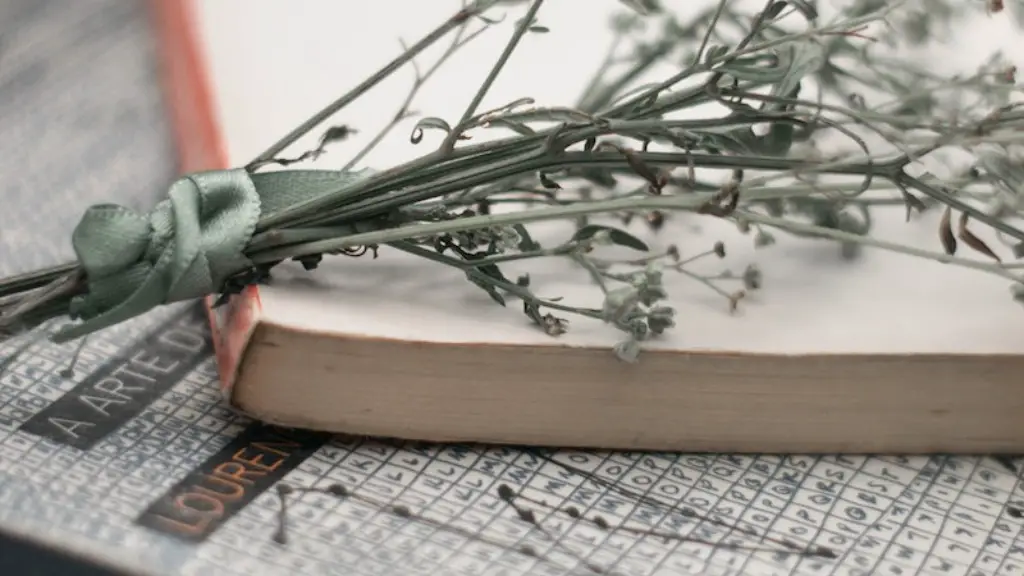Definition of Closed Form Poetry
Closed form poetry is a set pattern of writing poems where a particular form of structure and type of verse is used. It can be any style of poetry such as a sonnet, sestina, villanelle, haiku, etc., given a particular rhyming scheme, metrical feet, and stanza structure. It is seen as the opposite of open poetry, which has fewer constraints.
History of Closed Form Poetry
The earliest known form of closed form poetry is said to be the haiku, which was developed in Japan in the mid-seventeenth century. It was a short poem of three lines, with seventeen syllables. The form was meant to capture a moment, as it was a venue for creating spiritual and emotional resonance.
From there, traditional closed forms of poetry such as odes and sonnets began to appear in Western societies. As the Renaissance period arrived, Petrarchan and then Shakespearean sonnets became popular. In the 16th century, the sestina began to be widely used. The latter is still considered the most complicated form of poetry with its intricate structure and demands for exact repetition of certain words.
Milestones for Closed Form Poetry
The 19th century saw an explosion of closed form poetry with the Periodic Movement rooted in its strict structures. William Wordsworth and Samuel Coleridge took the poetic form to a new level as they wrote the poem Lyrical Ballads which would be considered one of the foundation stones for Romantic poetry.
The modernist movement in the early 20th century, pushed the envelope further with works such as T. S Elliot’s The Wasteland and Wallace Stevens’ Harmonium which broke away from the traditional structures and challenged the orthodoxy of closed form poetry.
Features of Closed Form Poetry
Closed form poetry requires a particular set of rules and restrictions when it comes to how to construct the poem. A common example of these rules are defined by rhyme scheme, meters, and stanza structure. These rules, combined with the need for concise and direct language, force the poet to produce a concise yet powerful piece of literature.
The poem’s structure is often dictated by using a few different sets of rules to devise the structure and meter of the poem. This results in the poem being compared more easily to others of the same type. When devising the poem’s content, the poet must strive for the ‘perfect’ combination between language, structure, and meaning that will enable the reader to gain the full impact of the piece.
Advantages of Closed Form Poetry
Due to its structural rigidity, there are several advantages to using closed form poetry. The structure of the poem is designed to help create a sense of balance and balance of ideas and themes. This gives the reader a sense of coherence and control to their reading experience.
The precise and exact demands of the structure help drive the poet to choose precise and precise language that carries a whole lot of weight. The structure and form of the poem help the poet to focus their message and create more impactful messages.
Also, the audience gains a lot from reading this type of poem. There is a familiar structure that is recognisable for them and the words have been carefully chosen for the poem. This creates a feeling of familiarity and allows them to appreciate the poem more deeply.
Disadvantages of Closed Form Poetry
The main disadvantage of closed form poetry is that it can be difficult and exhausting to master. There is a lot of memorization involved, and this can be difficult to keep up with because of how specific the forms’ demands often times can be. It can be limiting in terms of the poet’s creativity, as they must work within the strict guidelines of the structure, and constraints of the form.
Moreover, the process of coming up with content for the poem can become quite laborious, as the poet has to consider the use of language precisely and is restricted by the set rules of the structure. This can be problematic for those who are not used to such a structured and demanding form of writing.
Finally, as the form of the poem is so familiar, it can sometimes be difficult for a poet to come up with something that is original. As the poem relies so heavily on its structure, there is not much room for taking risks with the language and the use of imagery. Just as with any other writing, originality and newness can be difficult to come by in Closed Form Poetry.
Examples of Closed Form Poetry
Two common examples that are popular in the world of poetry are the sonnet and the haiku. The sonnet is a fourteen line poem that is often structured into four different stanzas of three lines and a concluding couplet. It is usually written in iambic pentameter and follows a rhyme scheme of ABAB CDCD EFEF GG.
The haiku, on the other hand, is a three line poem that usually consists of seventeen syllables. It generally has two parts and often times follows a ‘five-seven-five’ structure. An example of a haiku is:
“Birds in the sky,/ pouring out their song with joy./ The sun smiles brightly.”
Modern Examples of Closed Form Poetry
Modern examples of Closed Form Poetry include ekphrastic poetry, in which a poem is written in response to a work of art; and glosa poetry, which is a variation on the sonnet structure that puts emphasis on the inner quatrain.
The list for Closed Form Poetry goes on, with the cinquain, ballad, ode, and limerick being some of the more popular forms.
Modern adaptations of Closed Form Poetry still contain the same fundamental characteristics as the traditional forms. They simply inject a modern edge and choice of language that speaks to the contemporary reader.
Contemporary Closed Form Poetry
In the contemporary world, Closed Form Poetry is still popular, due to its ability to captivate an audience with its precise and powerful messages. It is especially popular within the academic world, as teachers and students are taught how to structure and interpret the traditional forms, and learn to utilise them within their own writing.
It is also popular within the creative community, as many people find that Closed Form Poetry is a great way of expressing emotions, feelings and stories. Due to its rigid structure, it can also be used to highlight humour, as the poet must twist and edit the language within the structure.
Not only is it a great form for expressing oneself, but it can also be used in other disciplines such as songwriting, as essential language and structure can be used to make an impactful piece of work.
Future of Closed Form Poetry
Looking to the future, Closed Form Poetry remains as popular as ever, with its traditional forms still as prevalent today. With the rise of the internet, social media and self-publishing, the traditional rules of poetry are still adhered to a certain degree, as the right combination of structure and language is still seen as the optimal way to capture one’s audience.
Using traditional forms in songwriting has become a great way to bridge the gap between music and poetry, and is seen as a great outlet for both poets and artists alike. It is also used as a great teaching aid in the traditional classroom as it helps students to understand the importance of well-crafted language and to appreciate its complexities.
The traditional forms of Closed Form Poetry are being adapted and edited to make them more contemporary. It is seen as an evergreen way for writers to express themselves and capture the attention of their audience. With the right combination of words and structure, Closed Form Poetry will continue to be popular and influential in society.


